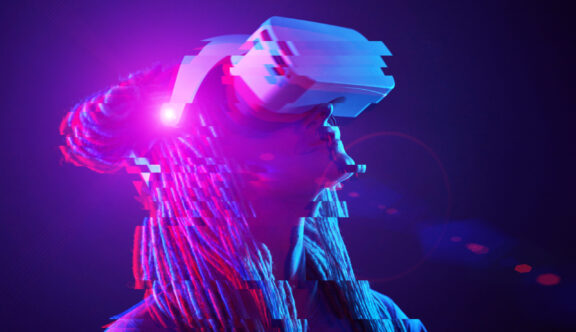This opinion piece, originally published in the Drum’s Deep Dive: Out of Home series, explores makes a different defense of advertising in the real world, arguing that the ‘metaverse’ might drive people back outside.
Will the metaverse ever be able to emulate the beautiful randomness of mother nature? The unpredictability; the raw experience; the grounding impact of soil between your toes? Even those predicted to adopt it and welcome it willingly into their lives, like gen Z, have their reservations.
Alongside mixed feelings, there’s a growing and genuine threat to our industry. Is creativity at risk in the absence of connecting with the real world? How will brands adapt to connecting with and targeting different identities, inside and outside the metaverse?
Creativity, in between worlds
Millions of viewers continue to tune in to Mark Zuckerberg’s vision for the metaverse, and opinion is divided. Personally, it sends shivers down my spine. I’m one for fresh air and pushing boundaries in the real world. But the evolution of the web into a three-dimensional ‘space’ where people can push the boundaries of reality presents some cool opportunities for a new wave of creative applications.
Where does the inspiration and headspace to ‘get creative’ come from if we remove ourselves from the grounding and very basal and primal need to be in the real world? Our fight and flight instincts are at risk of becoming diluted when ‘dangers’ are no longer ‘dangers’, ‘people’ are ‘identities’, and feelings are provoked by entities that we cannot physically touch.
When your eyes feed your brain a perceived reality that doesn’t touch all the vital senses, what does that mean for creativity?
Could we be at risk of crushing creativity and removing those vital touchpoints that the mind needs to be able to create, explore and innovate? The raw emotion that comes from a single sense of self could be diluted by living two lives. With children and adults alike having access to this new world comes the risk of compromizing the natural and primal centers that develop through natural interaction and stimulation.
Not to mention that the environment in which people ‘exist’ in the metaverse is entirely of someone else’s making.
A dream or a nightmare?
Ultimately, shouldn’t we in adland be rubbing our hands together? Harboring the ideal environment in which to cultivate and build meaningful and profitable audiences is surely what dreams are made of. Or is it? How on earth do you target people that aren’t ‘real’?
How will decisions and motivators change when people immerse themselves in an alternative reality?
This is a core challenge for marketers, who will need to present value propositions to, and map the customer journey of, ‘alter egos’ in the metaverse. In a recent survey by Tidio, creating an alter ego was the third-most anticipated benefit of the metaverse, and with 46% of people expecting that future people will exist more prominently on the metaverse than in the real world, that’s a huge consideration for targeting, persona generation and attribution. Or could it be that the ability to control identity in the metaverse will enable individuals to respond to and act in an even more predictable way, making targeting easier?
The transition between the real world and the metaverse across a customer journey will be fascinating to navigate, as brands will need to traverse touchpoints both inside and outside the metaverse for a seamless customer experience.
Zuckerberg claims that the metaverse will revolutionize art and creativity, providing access to theater, art and entertainment with no boundaries or discrimination, but where does the creative inspiration come from when the brain is moving from the real to the virtual? Surely you can only have an imagination with no boundaries from a mind that is founded on planet Earth.
But then there’s the very sound argument that the metaverse presents an untold platform for creativity to blossom through collaboration and social interaction. Artists and creatives gain inspiration from a mix of their surroundings and the work of others, which means that to realise creative potential, many will turn to a mix of the real and the virtual for those vital touchpoints, yet collaborative opportunity.
While it’s safe to say that the metaverse is set to redefine and even disrupt creative thinking, the success of creatives in the space will depend on how they adapt during this steep change curve. Creative inspiration will, in fact, need to come from both connecting with the real world and embracing ‘freedom’ in this brave new world.
